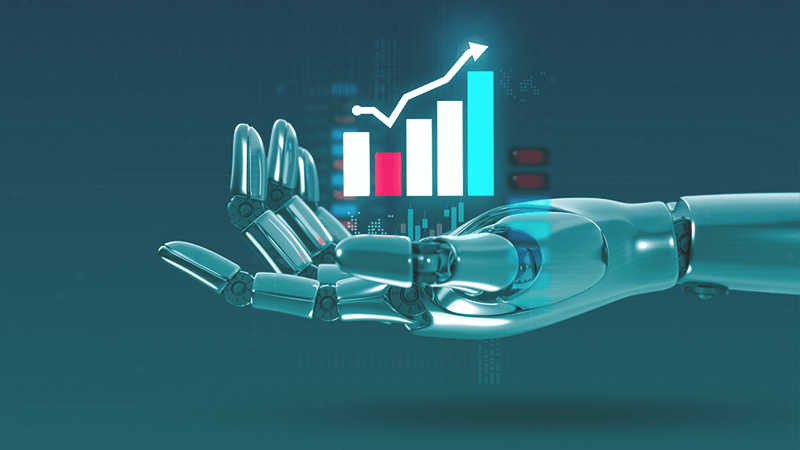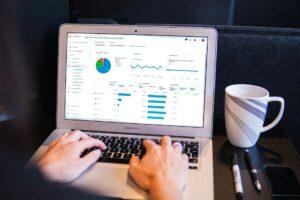Growth of AI Data Analysis Tools as a Niche

To understand how AI Data Analysis Tools have grown as a niche, it is first necessary to understand the concept of Big Data. Big data is a combination of structured, semi-structured, and unstructured data that organizations collect, analyze, and mine for information and insights. It is used in various models to train for machine learning or predictive models. To use this data is where AI Data Analysis plays its part.
When dealing with data, there are 3 V’s to make note of. Volume, Variety, and Velocity. They refer to the size, nature, and the speed with which they are generated. To deal with these technicalities, AI Data analysis Tools are used. Let us now delve into what’s next for AI data analysis tool and growth of this niche to see what’s next in store for us!
Table of contents
What’s Next for These AI Data Analysis Tools
AI Data Tools are continuously improving at what they do. This opens up the potential for growth in various domains. So a bright technologically advanced future is what’s next and Qmantic is having its fair share in it.
Predictive Analytics
Predictive Analysis is making predictions about the future from past and present trends and patterns. As of right now, there are services and models like those offered by Qmantic that help in charting up these predictions, but how will this be affected in the future?
The use of these predictive models at an advanced level can help change the domains of stock markets and cryptocurrencies. Imagine having professional guidance inferred all from historical data, leaving a minute margin of errors. Similarly, these can also be used in healthcare and security to prepare for upcoming challenges. Businesses are already making use of it in ways that they can, and it’s going to only go up from here on.
NLP and Conversational Tones
NLP is Natural Language Processing. It helps data to be presented in a conversational manner, similar to how humans communicate. These models are used to develop AI assistants. For the future of AI Data Analysis, NLP is being incorporated in a visionary manner. While this is still under work and improvement, the main end goal is to have users be able to communicate with their data sets.
Imagine being able to communicate and interact with your data. This opens new horizons for understanding and improving upon it for more favorable outcomes and strategies.
Real-Time Data Analysis
Data Analysis was considered a timely and costly process. It took an insane amount of effort to manually analyze data, especially if it was for a big corporation and vast in size. AI’s introduction might have streamlined the process by introducing efficient solutions that can save the manual hassle. But, it still poses limitations to the number of times an analysis is run.
Every single analysis is run at planned intervals to check and keep up to date. Now imagine, all of this being done in real-time.
What’s next for Real-Time Data Analysis is that data will be continuously added, adjusted, and analyzed in real-time, giving a more efficient outlook on their performance and saving the trouble of going through the process again and again after every change in the process.
Automation
Artificial Intelligence as a technology is pretty vital to automation. Having a service, model or product be integrated with AI enables it to be automated to a greater degree. This is said and true even in the case of Data analysis, especially those incorporated with AI. But what’s next for automation?
While many data sets are automated in their nature to process and make inferences from the data, the process still requires expertise in handling, assessment, and sorts. In the future one can hope that the process of collecting, cleaning, integrating, analyzing, and presenting the data can all be automated using AI making AI data analysis one of the easiest tasks at hand.
Enhanced Visual Techniques
Qmantic may be providing its users with the facility to employ customized, easy-to-use dashboards for the visualization of data but it is still not that advanced for other data analysis projects and niches. At most, the data involves various prompts and manual settings before it can be depicted visually, and that too in a simplified manner.
The future for visual enhancements involves techniques and procedures that involve limited fine-tuning and setting, allowing users to have the data depicted in any manner of way they would like. For example, they could have the data be ready-made into a slide presentation, a comparative graph to study regression, or other analytical trends regarding the data.
The vision of the future is to bring advancements and easy with minimum effort to make life easier and more appealing, especially when dealing with professional outlooks.
Federated Learning 9protection and privacy of sensitive data for analysis
Federated learning refers to the process of processing sensitive data without the leak of information. For data analysis, it is necessary to go over a vast amount of data. Some of which might be sensitive. This information can be jumbled up in a manner that it can leak to sources that the owner of the data might not approve of. Federated Learning refers to the training of models in such a way that it offers protection and privacy.
As of now, much of such information is at risk but with more advancements in ethical considerations involving AI, it can be said that federated learning models are what’s next for the security and privacy of certain secure datasets. Such that they can use to make the necessary inferences but ensure no leak is made.
Personalized Insights
After the data has been analyzed, AI data analysis usually offers and presents certain insights into the data and the inferences that have been derived from it. It involves recommending the use of possible strategies based on trends and patterns. While these inferences are made from data based on a success ratio, they fail to cater to the nature, approach, and goals of the brand or company. Just like the same recipe followed by two different chefs produces a different flavor, each company and brand has its own definition of success.
AI Data Analysis presents an advancement in the coming years to further personalize these insights such that they reflect the tone and goals of the brand and not only present them with winning strategies but give them the foolproof solution of their own custom key to success.
What’s Next for Qmantic
Qmantic is a service provider for AI data analysis for businesses integrated with BI and cloud strategies. As mentioned above, Qmantic already aspires and leads the way in providing cutting-edge solutions in its respective fields. Nevertheless, Qmantic also understands that the road to innovation is never-ending and continuously works upon its models to bring the aforementioned future as early as possible into the hands of the users.
We aim to deliver the finest standard of service available. To be the name synonymous with brand data analysis.
In Qmantic’s vision of what’s next, we see ourselves more poised to cover all sorts of clients from various niches, helping them provide secure, personalized, real-time, automated solutions to assess their data and interact with them in a conversational manner making handling and using the data ever the easier. Qmantic simply wishes to ensure that the mentioned visions of the future are not only pretty talk but a soon-to-be reality.





